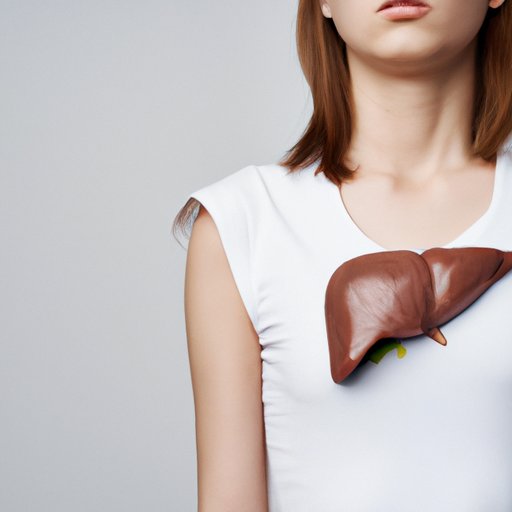
I. Introduction
Pain in the abdomen can be a signal of numerous health issues. Therefore, it’s important to differentiate the source of pain correctly. Liver and gallbladder pain causes and symptoms can often be similar, making it challenging to identify the root cause of the uneasiness. This article will provide an overview of the anatomy and functions of the liver and gallbladder, discuss the causes and symptoms of their respective pains, and provide insight into the different approaches for diagnosing and treating liver and gallbladder pain.
II. Causes and Symptoms of Liver Pain
The liver is located on the right side of the abdomen, primarily under the rib cage. The vital organ plays a pivotal role in digesting food, processing drugs and filtering waste. Common causes of liver pain can include liver disease, hepatitis, or alcohol-related liver damage. Symptoms of liver damage may include feeling fatigued, weight loss, bloating, and abdominal pain. If left untreated, the damage can progress to liver failure and require a transplant. Other symptoms can include yellowing of the skin and eyes, nausea, and vomiting.
III. Causes and Symptoms of Gallbladder Pain
The gallbladder, located in the upper right abdomen, stores and releases bile, a liquid that assists with the digestion of fats. Common causes of gallbladder pain are gallstones or inflammation of the organ. Symptoms of a gallbladder attack typically include intense abdominal pain located in the upper right quadrant of the abdomen, nausea, and vomiting.
IV. Comparison of Liver and Gallbladder Pain
The primary difference between liver and gallbladder pain is the location. Liver pain typically occurs in the upper right quadrant while gallbladder pain is also in the upper right quadrant but may radiate to the right shoulder blade. The intensity of liver pain is usually dull and constant, where pain caused by the gallbladder can be sudden and severe. Liver pain may also be described as a sense of fullness underneath the rib cage, while gallbladder pain is often compared to indigestion. It’s possible to misinterpret liver or gallbladder pain for other abdominal conditions, such as stomach ulcers or acid reflux, so it’s essential to be aware of the differences and seek medical attention if symptoms persist.
V. How to Tell the Difference Between Liver and Gallbladder Pain
Self-assessment tools for determining liver or gallbladder pain can be helpful in establishing the cause of the pain. The pain caused by the liver occurs primarily in the upper right quadrant of the abdomen, where gallbladder pain may radiate to the right shoulder blade. Gallbladder pain often occurs suddenly, while liver pain can be dull and persistent. Lifestyle factors like alcohol consumption and fatty foods can also contribute to pain caused by both organs. If gallbladder pain persists or does not subside, it’s best to seek medical attention.
VI. Medical Diagnosis
If symptoms persist, a medical practitioner may recommend physical exams, lab tests and imaging to help identify if the pain is liver or gallbladder-related. Ultrasounds, CT scans, and MRIs can be used to examine the organs. Blood tests are commonly used in detecting liver issues as they can help expose abnormalities or problems with the liver enzymes. In cases where the pain is overshadowed by severe symptoms like fever or vomiting, urgent medical attention should be sought.
VII. Treatment Options for Liver and Gallbladder Pain
The treatment options for liver pain may vary depending on the cause and severity of the damage. Lifestyle modifications such as reducing alcohol consumption and increasing physical activity, adopting a healthy diet and losing weight can assist in alleviating liver pain. In some cases, the use of medication or surgical intervention may be necessitated. In contrast, gallbladder pain caused by gallstones can be treated using medicines to dissolve the stones or by surgically removing the entire gallbladder. In acute cases, surgical intervention may be the best course of action. If the pain consistently persists or worsens, it’s best to seek medical advice.
VIII. Conclusion
As illustrated, liver and gallbladder pains may be similar, and it’s essential to differentiate between them to identify the root cause of the pain reliably and adequately address it. Symptoms and lifestyle choices may indicate which organ is affected, but it’s necessary to seek medical attention to receive adequate diagnosis and treatment.




